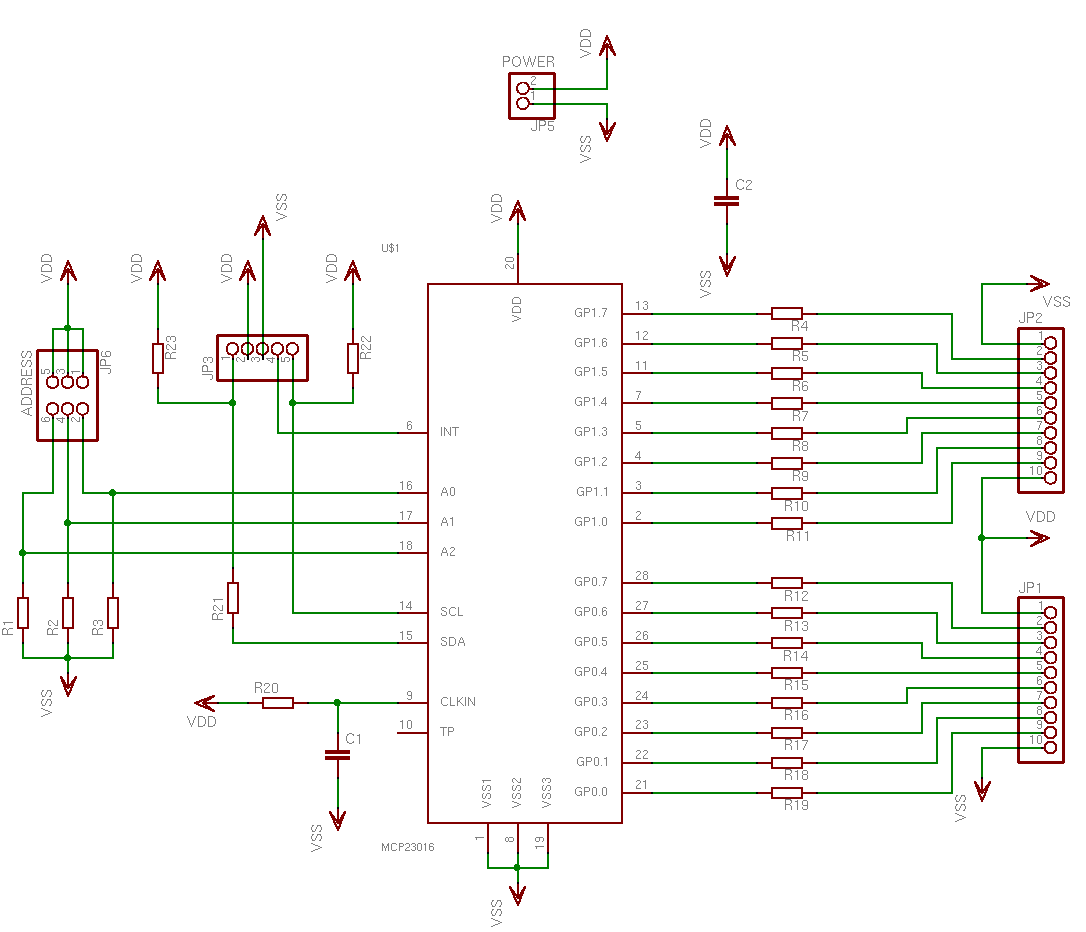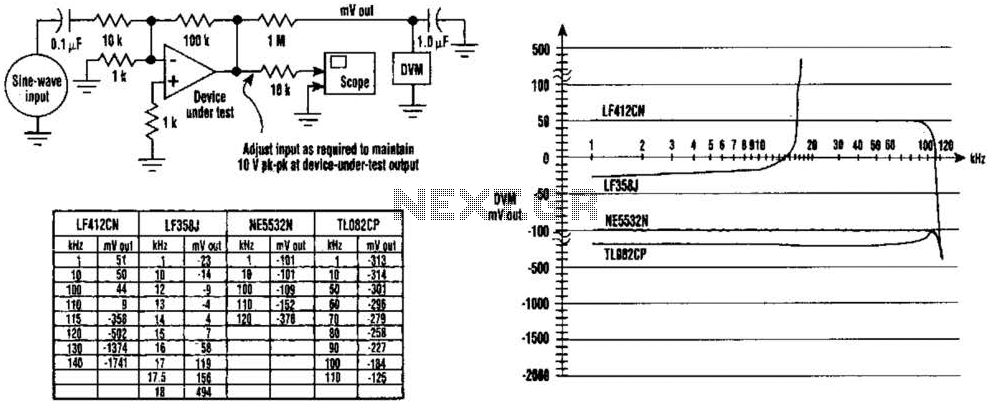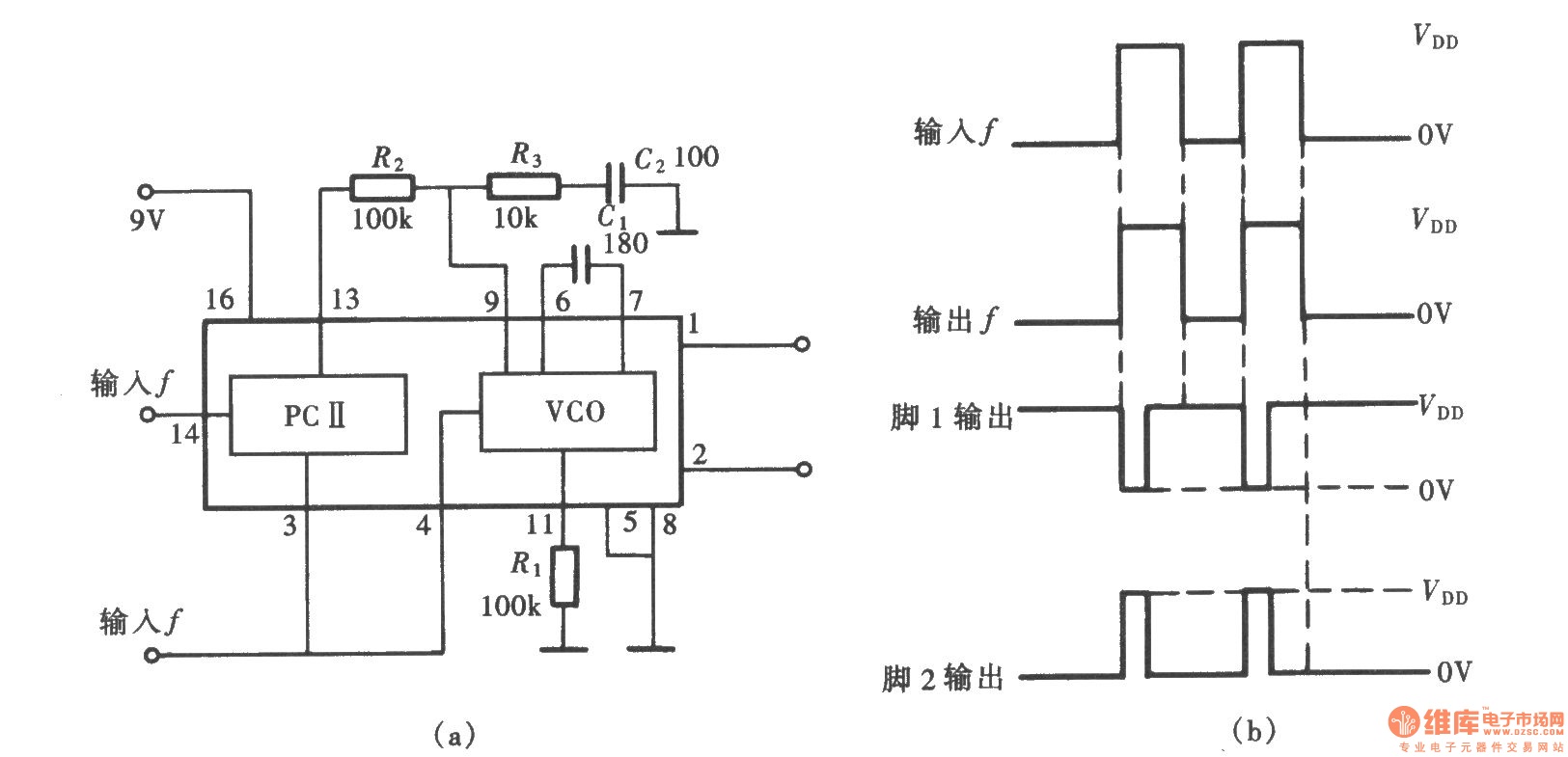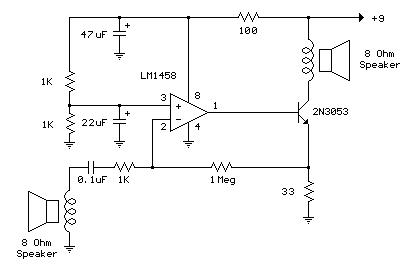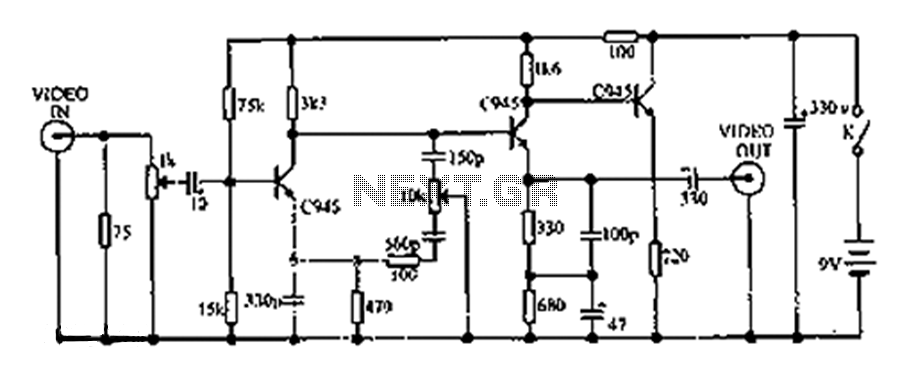
Headphone amplifier with TDA2004 circuit
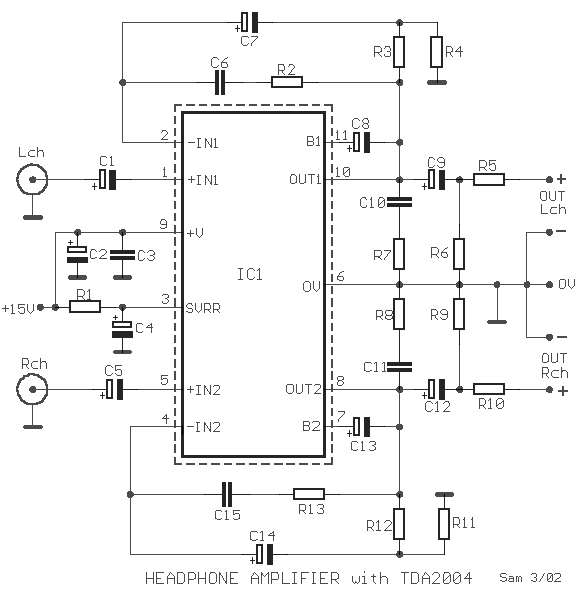
An operational amplifier designed for medium power applications, utilized as a headphone amplifier capable of driving low loads. The circuit consists of two amplifiers, with a voltage gain set at 40 dB, determined by the resistor pairs R3-R4 and R11-R12 for each channel, respectively. The bandwidth limitation for each unit is controlled by the combination of resistors and capacitors: R12 and C2, as well as R13 and C15, resulting in a bandwidth of 22 kHz. Resistors R5 and R10 are employed to adapt the impedance for earphones. Additionally, resistors R6 and R9 function to discharge capacitors C9 and C12, preventing any unwanted noise when headphones are connected to the plug. The circuit exhibits excellent characteristics, including low distortion, minimal noise, and a satisfactory frequency response. The circuit requires approximately 150 mA of current with a supply voltage of +15 V. Integrated circuit IC1 should be mounted on an appropriate heatsink.
The operational amplifier circuit is designed to provide a reliable and efficient solution for driving headphones, particularly in applications where low load impedance is prevalent. The dual amplifier configuration allows for stereo output, enhancing the listening experience by delivering a balanced audio signal to each ear.
The voltage gain of 40 dB is achieved through careful selection of the feedback and input resistors (R3, R4, R11, and R12), which are crucial for maintaining the desired amplification level while minimizing distortion. The choice of resistors directly impacts the linearity and overall performance of the amplifier. The bandwidth limitation set at 22 kHz is sufficient for most audio applications, ensuring that the amplifier can handle the full range of audible frequencies without introducing significant phase shift or attenuation.
Impedance matching is critical in audio applications to ensure maximum power transfer and to avoid signal degradation. Resistors R5 and R10 serve this purpose by adjusting the output impedance of the amplifier to match that of the connected earphones, thereby optimizing performance.
The discharge resistors R6 and R9 play an essential role in the circuit's noise management. By discharging the coupling capacitors (C9 and C12) when the headphones are connected or disconnected, these resistors help eliminate pops or clicks that could otherwise disrupt the listening experience.
The power supply requirement of +15 V and a current draw of approximately 150 mA indicate that the circuit is designed for moderate power applications. The inclusion of a heatsink for IC1 is a necessary design consideration, as it helps dissipate heat generated during operation, ensuring the longevity and reliability of the amplifier.
Overall, this operational amplifier circuit is engineered to deliver high-fidelity audio output with low distortion and noise, making it suitable for a variety of headphone amplification applications. Proper layout and component selection are critical to achieving optimal performance and reliability in real-world scenarios.A opamp medium power, used as amplifier of headphones with possibility drive low loads. It contains in a nutshell two amplifiers. The voltage gain, has been determined in 40dB, from the R3-4 and R11-12, for each channel, respectively. The restriction of bandwidth for each unit is regulated by the combination of R12, C2 and R13, C15, in
22KHZ. The R5, R10 attend to the adaptation of impedance earphones. The resistors R6 and R9 discharge the capacitors C9 and C12, in order that when we connect the headphones in the plug, not we have annoying noise. The circuit has very good characteristics as low distortion, noise and satisfactory frequency response.
The requirement of circuit in current is 150mA, roughly, with voltage supply + 15V. The IC1 should be placed on a suitable heatsink. 🔗 External reference
The operational amplifier circuit is designed to provide a reliable and efficient solution for driving headphones, particularly in applications where low load impedance is prevalent. The dual amplifier configuration allows for stereo output, enhancing the listening experience by delivering a balanced audio signal to each ear.
The voltage gain of 40 dB is achieved through careful selection of the feedback and input resistors (R3, R4, R11, and R12), which are crucial for maintaining the desired amplification level while minimizing distortion. The choice of resistors directly impacts the linearity and overall performance of the amplifier. The bandwidth limitation set at 22 kHz is sufficient for most audio applications, ensuring that the amplifier can handle the full range of audible frequencies without introducing significant phase shift or attenuation.
Impedance matching is critical in audio applications to ensure maximum power transfer and to avoid signal degradation. Resistors R5 and R10 serve this purpose by adjusting the output impedance of the amplifier to match that of the connected earphones, thereby optimizing performance.
The discharge resistors R6 and R9 play an essential role in the circuit's noise management. By discharging the coupling capacitors (C9 and C12) when the headphones are connected or disconnected, these resistors help eliminate pops or clicks that could otherwise disrupt the listening experience.
The power supply requirement of +15 V and a current draw of approximately 150 mA indicate that the circuit is designed for moderate power applications. The inclusion of a heatsink for IC1 is a necessary design consideration, as it helps dissipate heat generated during operation, ensuring the longevity and reliability of the amplifier.
Overall, this operational amplifier circuit is engineered to deliver high-fidelity audio output with low distortion and noise, making it suitable for a variety of headphone amplification applications. Proper layout and component selection are critical to achieving optimal performance and reliability in real-world scenarios.A opamp medium power, used as amplifier of headphones with possibility drive low loads. It contains in a nutshell two amplifiers. The voltage gain, has been determined in 40dB, from the R3-4 and R11-12, for each channel, respectively. The restriction of bandwidth for each unit is regulated by the combination of R12, C2 and R13, C15, in
22KHZ. The R5, R10 attend to the adaptation of impedance earphones. The resistors R6 and R9 discharge the capacitors C9 and C12, in order that when we connect the headphones in the plug, not we have annoying noise. The circuit has very good characteristics as low distortion, noise and satisfactory frequency response.
The requirement of circuit in current is 150mA, roughly, with voltage supply + 15V. The IC1 should be placed on a suitable heatsink. 🔗 External reference
Warning: include(partials/cookie-banner.php): Failed to open stream: Permission denied in /var/www/html/nextgr/view-circuit.php on line 713
Warning: include(): Failed opening 'partials/cookie-banner.php' for inclusion (include_path='.:/usr/share/php') in /var/www/html/nextgr/view-circuit.php on line 713
